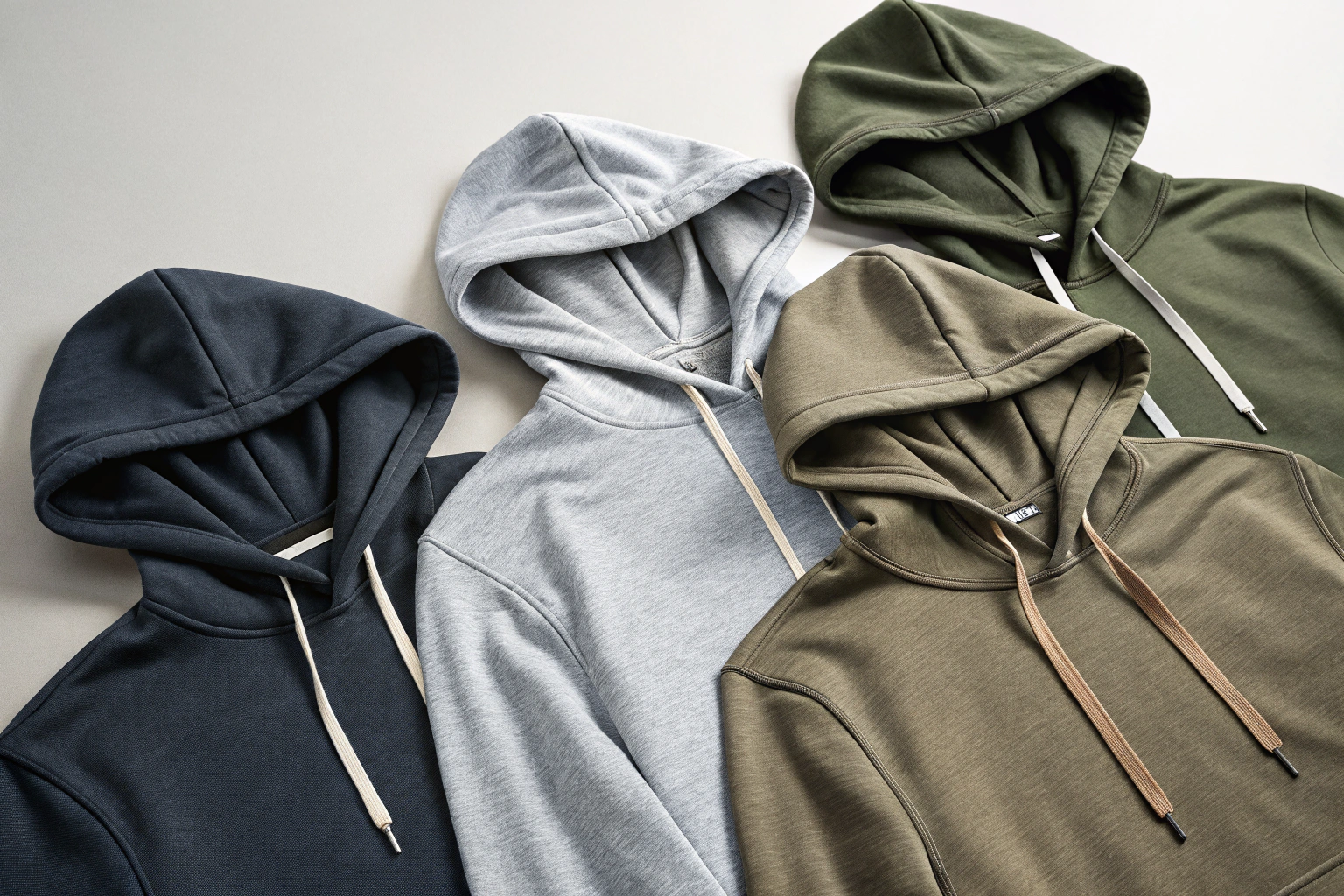Hoodie drawstrings come in flat, round, tubular, elastic, and reflective types, with modern trends focusing on contrast colors, metal tips, and functional-meets-fashion upgrades.

I used to treat hoodie drawstrings as an afterthought—just add a cord and move on. But once a buyer asked to swap in waxed round tips and charge a premium, I realized this detail isn’t minor. It’s part of the look. It’s part of the story. Let’s break down the types and trends worth knowing.
What types of drawstrings are used in hoodies?
Different shapes create different styles and functions.
Common hoodie drawstring types include flat, round, tubular, braided, and elastic cords—each chosen for specific looks, comfort, or performance needs.
Flat drawstrings give a clean, urban look—great for streetwear styles. Round ones feel more athletic or retro. Tubular styles are often cotton-based, softer to the touch. Elastic drawcords work better in activewear, where movement matters.
Some clients request braided cords with dual-tone twists or patterns for a visual punch. We’ve even done rope-style cords for oversized hoodies. The texture alone makes the hoodie stand out.
How do drawstring tips influence hoodie design?
Drawstring tips, called aglets, can be plastic, metal, knotted, or dipped—and affect both aesthetics and user experience.
Plastic aglets are most common—cheap, lightweight, and easy to manufacture. Metal aglets elevate the product, adding a sleek, premium edge. We once added gold-tone aglets to a fleece hoodie line and it doubled engagement in lifestyle photos.
For sustainable lines, some brands skip aglets altogether and go with hand-knotted ends or dipped wax finishes. They give an artisan look without added hardware.
What are the latest drawstring trends in fashion hoodies?
Current drawstring trends include tonal cords for minimal looks, contrast colors for statement styles, branded tips, and thick rope cords for oversized hoodies.
Right now, two-tone and contrast cords are everywhere. Think white hoodie, red drawstring. It adds a pop without needing print. Branded aglets—like debossed metal tips or rubber logo toggles—add value fast.
In oversized or drop-shoulder silhouettes, we’re seeing heavy rope-style drawstrings, sometimes with raw knot ends. It emphasizes the garment’s volume and adds to the laid-back tone.
Which drawstrings work best for activewear?
For activewear, the best drawstrings are stretchable, lightweight, and durable—usually elastic or polyester-blend cords with heat-sealed tips.
We use soft-touch elastic cords with silicone-dipped ends in our men’s and women’s training hoodies. They’re lightweight, don’t flap during workouts, and adjust easily. For running or fitness, bulkier cords can get in the way—so smaller, cleaner cords work best.
In some high-movement designs, we even eliminate the cord and use internal elastic channels for a cleaner look.
How do you choose the right drawstring for your brand?
Choose your hoodie drawstring based on style identity, target market, functionality, and fabric type—each combination tells a different brand story.
Here’s a breakdown for quick reference:
| Hoodie Type | Recommended Drawstring |
|---|---|
| Basic streetwear | Flat cotton cord, plastic tip |
| Premium fleece | Round waxed cord, metal aglet |
| Oversized fashion | Rope-style cord, knotted ends |
| Sportswear / training | Elastic cord, sealed silicone tip |
| Minimalist | Tonal flat drawstring, no logo |
The drawstring is more than function—it’s a statement. Make sure it speaks clearly.
Conclusion
From material to tip, your hoodie’s drawstring adds more than closure—it adds character, comfort, and a clear sense of style.

